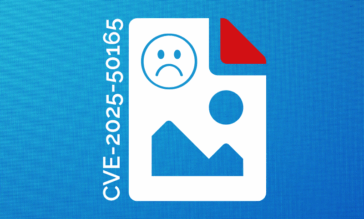3 Steps to Effective Threat Exposure Management

Do you really know how exposed your organization is?
For many, the answer is a resounding “No.” Yet, awareness of potential attack surfaces and lurking threats is just the beginning, which means there’s good reason to get a plan in place. Threat Exposure Management (TEM) isn’t just about listing dangers—it’s about actively reducing them to manageable risks. It’s about converting the unknowns into a structured defense strategy, ensuring your data and operations aren’t just surviving but thriving under the vigilant guard of proactive security measures. It’s crucial for any business looking to protect its integrity, comply with regulations, and maintain the trust of those it serves.
This blog will guide you through the essential steps of initiating a robust Threat Exposure Management program. We’ll explore strategic measures to reduce your attack surface and enhance your organization’s defense against potential cyber incidents.
Step 1: Assess Your Current Security Posture
Starting a Threat Exposure Management program begins with scoping and discovery. For most organizations, this is done with a comprehensive risk assessment, crucial for identifying and understanding the vulnerabilities within an organization’s network, software, and data-handling processes. This first step lays the groundwork for recognizing all potential security weaknesses that threat actors could exploit. With a robust risk assessment, organizations can set the stage for effectively reducing their attack surface and implementing proactive defense strategies.
Utilizing state-of-the-art tools and techniques built for Threat Exposure Management is essential for a thorough evaluation. These tools should provide a holistic view of organizational vulnerabilities, enabling security teams to detect and prioritize risks effectively. This might include automated scanning tools, vulnerability assessment software, and advanced analytics platforms that integrate with existing security systems to enhance visibility and control over the security posture.
Step 2: Reduce Your Attack Surface
Reducing your attack surface is critical in enhancing your organization’s security posture. A key strategy in this process involves the use of advanced data sanitization technologies, which are essential for neutralizing threats embedded in data as it crosses organizational boundaries. Technologies that offer advanced data sanitization play pivotal roles here, including anonymizing sensitive data while stripping potential malware from incoming and outgoing data streams, effectively reducing the points of vulnerability that attackers could exploit.
Consider the scenario where a healthcare provider receives numerous daily patient reports from various clinics. By implementing data sanitization at the boundary points, the provider ensures that each file is cleansed of malware before integration into their central system, thereby reducing the risk of a security breach. The same goes for privacy risks that make up most healthcare documentation, whether it’s for physician use or insurance purposes. Depending on the user or purpose the document is intended for, data privacy tools that mask or anonymize sensitive information are crucial for stemming any unintentional data exposure.
Eliminating patchable exposures also helps reduce the attack surface, aiding threat exposure management. This involves systematically identifying and addressing vulnerabilities that can be patched. Regular updates and vigilant patch management protect against known threats and minimize the broader attack surface. For instance, when a new patch is released that addresses a known vulnerability in widely used software, applying this patch promptly across all systems can significantly reduce the likelihood of exploitation.
Step 3: Implement Proactive Defense Strategies
The final step in fortifying your organization’s cybersecurity framework involves implementing proactive defense strategies beyond patching. Addressing non-patchable exposures, including bolstering access controls, enhancing endpoint security, and adopting a Zero Trust architecture, is crucial.
With the right data security tools, organizations can ensure that only authenticated and authorized users and devices can access sensitive systems and data by implementing stringent access controls. This might include multifactor authentication and complex password policies across all access points.
At the same time, enhancing endpoint security involves deploying advanced data solutions to monitor and alert against threats at each endpoint within the network. This includes installing advanced malware protection software that detects and isolates threats before they can infiltrate the network. It is particularly useful in environments with high device variability, such as healthcare or retail.
Integrating a Zero Trust architecture is particularly effective in environments where traditional security perimeters have become obsolete. Zero Trust operates on the principle that no entity, inside or outside the network, should be trusted by default. Implementing this model involves verifying everything trying to connect to your systems before granting access, thereby significantly reducing the attack surface.
Continuous monitoring and real-time threat detection build on this by adding a proactive defense strategy. Utilizing tools that provide continuous surveillance and network traffic analysis allows organizations to swiftly detect and respond to anomalies and potential threats. This proactive monitoring can differentiate between a minor security event and a catastrophic data breach, especially in finance and healthcare sectors where data sensitivity is a top priority.
Integrate Votiro DDR to Enhance Your TEM Program
Votiro’s Data Detection and Response (DDR) technology plays a pivotal role in Threat Exposure Management by integrating advanced data sanitization and private data protection techniques. This includes real-time data masking, which involves replacing sensitive data elements with non-sensitive equivalents. Obfuscation allows users to send data throughout the system without exposing specific elements, all dependent on user authorization and company policies. This significantly enhances data privacy while maintaining functionality for processing and analysis. By integrating data masking and threat mitigation, Votiro ensures that any data crossing organizational boundaries is stripped of potential threats and privacy concerns, effectively reducing the attack surface and aligning with Threat Exposure Management objectives to shield against malware and unauthorized data access.
This approach mitigates the risks associated with non-patchable exposures and reinforces the organization’s compliance with stringent data protection regulations, fortifying its defensive posture against sophisticated cyber threats.
Integrating Votiro’s data security solution also significantly enhances the capability of any Threat Exposure Management program by preemptively eliminating malware. Votiro DDR ensures that all incoming and outgoing data remains clean and uncompromised, addressing one of the fundamental aspects of securing an organization.
Votiro’s solution integrates seamlessly with existing security frameworks, providing a robust layer of protection that complements and enhances other security measures without disrupting operational flow. This integration is crucial for organizations looking to maintain a proactive stance in their security operations, aligning with the latest cyber defense technologies to safeguard their digital landscapes effectively.
To learn more about Votiro’s Zero Trust Data Detection and Response capabilities, sign up for a one-on-one demo of the platform or try it free for 30 days and see how Votiro can effectively, and quickly, enhance your Threat Exposure Management program.
News you can use
Stay up-to-date on the latest industry news and get all the insights you need to navigate the cybersecurity world like a pro. It's as easy as using that form to the right. No catch. Just click, fill, subscribe, and sit back as the information comes to you.
Sign-up Here!
Subscribe to our newsletter for real-time insights about the cybersecurity industry.



